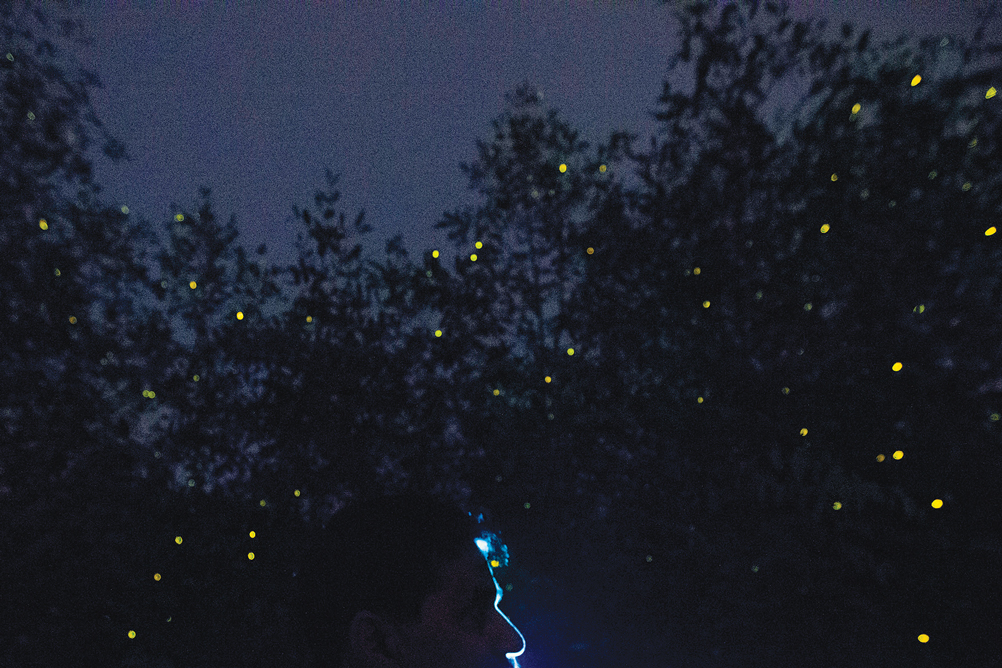There is no research available to determine whether the insects are vanishing FIREFLIES

By SHEILA CUBICK
OSU Extension master gardener volunteer
Mysterious lights flashing in your backyard. They are faint at first, but increasing in number and intensity as the night gets darker and you continue to watch.
It is firefly time, or as we say in this area, lightning-bug time.
Humans are fascinated by the self-generated light of the firefly. As children, we capture them in our hands and put them in jars to make a night light. As adults, we watch them as we relax on lazy summer evenings, enjoying the calm and amazing nature in our own backyards.
Over the last decade, however, many people have noticed a decrease in the number of lightning bugs in yards and in the countryside.
The bright flashes remembered in favorite viewing spots have seemed to be fewer in number. Are we really losing our fireflies or is this just a phenomenon of our decreased attention to nature, fading memories, or normal seasonal fluctuations? Why should we care?
Fireflies are in the family Lampyrdae, the beetle family. They prefer warm, moist places, although they do live in drier areas as well. Many species live near forests or other humid areas. The firefly life cycle takes about one year and consists of four stages of metamorphosis: egg, larva, pupa and adult.
Fertilized eggs are laid either a short distance underground or under leaf litter by the female after mating in the summer. Within three to four weeks, the eggs hatch into firefly larvae called glowworms because they glow with the same bioluminescent chemicals found in adults.
Larvae feed on slugs, worms, snails and mites – thus they are a gardener’s friend. Many ingest their prey with enzymes which liquefy the body for them to eat. Others eat pollen and nectar.
The larvae will overwinter by going underground or sheltering on or beneath tree bark. They will molt (shed their outer skin, called an exoskeletons) several times before becoming a pupa. They will rest as pupa for one to slightly more than two weeks before emerging as adult fireflies.
While we enjoy their beauty, fireflies use their lights for a purpose – to find mates. Flash patterns are species-specific. Males flash and females answer. Species with similar patterns fly at different heights so not to be confused by the wrong species.
Now, back to the observations of diminishing populations that some say they are noticing these days.
People have begun to wonder if the apparent decreases in firefly sightings are due to environmental changes.
Some concerns are that light sources may interfere with their ability to see flashes for mating. Other concerns are with the use of pesticides that may accidentally kill firefly larvae and adults. Even mowing too low or too often could kill fireflies taking refuge in moist, cool grass during the day. Habitat loss through deforestation could be impacting firefly numbers as well.
According to Dr. David J. Shetlar, professor of urban landscape entomology at OSU Extension, deforestation has contributed to population decline in some species of fireflies both in North America and around the world.
Overall, however, there is “no real loss of firefly populations,” but they are “holding pretty steady with the understanding that there will always be year-to-year fluctuations due to their food availability,” Shetlar said.
Remember that firefly larvae are predators, and many of the species prey on snails and slugs, he said. So, when we have wetter-than-normal summers that favor snails and slugs, the next year we should see more fireflies (they take one year to complete their cycles).
“Likewise, when we had the prolonged droughts several summers ago, the following summers, firefly populations were definitely down. There is little research-based science on whether of firefly populations are actually increasing, decreasing or holding steady,” Shetlar says.
So, are fireflies really vanishing? Without sufficient data it is hard to say for certain. Without funding for such an extensive project, scientists need help from everyday citizens. You can help by enrolling in the Firefly Watch project from the Boston Museum of Science.
With last year’s wet summer, we should expect a great show in backyards this summer.
To be part of the firefly watch, visit http://go.osu.edu/fireflywatch. To learn more about fireflies, go to: http://go.osu.edu/fireflies.
 43
43
